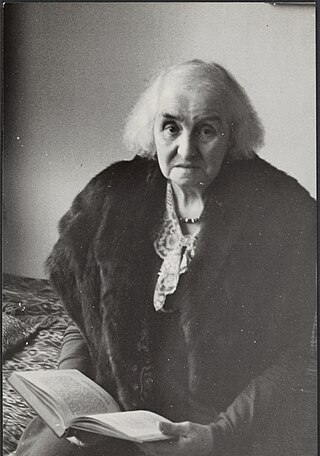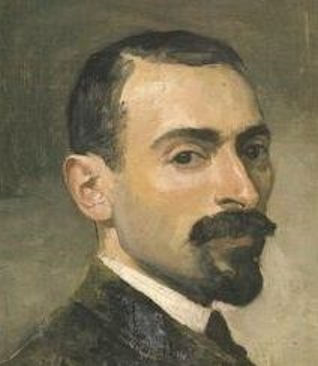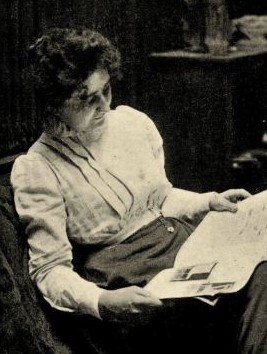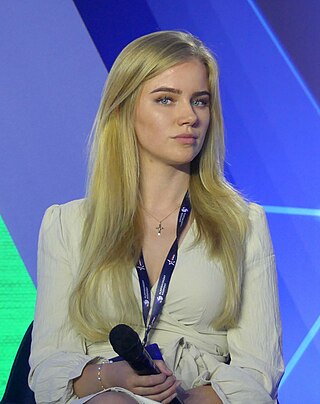
de Volkskrant is a Dutch daily morning newspaper. Founded in 1919, it has a nationwide circulation of about 250,000.

De Telegraaf is the largest Dutch daily morning newspaper. Paul Jansen has been the editor-in-chief since August 2015. De Telegraaf is based in Amsterdam and is owned by the Belgian company Mediahuis.

De Tijd is a Belgian newspaper that mainly focuses on business and economics. It is printed on salmon pink paper since May 2009, following the example of its colleagues Financial Times, Het Financieele Dagblad, FT Deutschland and many more.
A weekly newspaper is a general-news or current affairs publication that is issued once or twice a week in a wide variety broadsheet, magazine, and digital formats. Similarly, a biweekly newspaper is published once every two weeks. Weekly newspapers tend to have smaller circulations than daily newspapers, and often cover smaller territories, such as one or more smaller towns, a rural county, or a few neighborhoods in a large city. Frequently, weeklies cover local news and engage in community journalism.

The Nieuw Israelietisch Weekblad, in short NIW, is the only Jewish weekly and the oldest functioning news magazine in the Netherlands. Founded on August 4, 1865, it has since informed the Jewish community on issues concerning Jews and Judaism in the Netherlands and in the world. Its headquarters is in Amstelveen. The chairman of the NIW is Gideon Simon and the managing editor is Esther Voet.

HP/De Tijd is a Dutch language monthly opinion magazine. Its editorial offices are in Amsterdam, Netherlands. Alongside De Groene Amsterdammer, Vrij Nederland and Elsevier, it is one of the most influential Dutch opinion magazines.

Electronics Weekly is a weekly trade journal for electronics professionals which was first published by Reed Business Information on 7 September 1960. It was the first British Electronics newspaper and its founding editor was Cyril C. Gee who had previously been the editor of British Communications and Electronics. It is available in print and electronic formats, and the readership is audited by BPA Worldwide, which verifies its circulation twice yearly. The magazine's circulation in 2007 was 40,918 copies. In August 2012 Metropolis International purchased the title from RBI.
Ny Teknik is a weekly Swedish magazine with news, debates and ads in the field of technology and engineering. It is published in Stockholm, Sweden.
De Graaf van het Hoogveen was a restaurant located in Badhotel Zeerust in Noordwijk aan Zee, Netherlands. It was a fine dining restaurant that was awarded one Michelin star in 1982 and retained that rating until 1988.

Arendo Joustra is a Dutch writer and journalist.
Margriet is a Dutch weekly magazine for women of all ages, which publishes articles on fashion, beauty, health, nutrition, relationships, and society. Formerly published by Verenigde Nederlandse Uitgeverijen, it is owned and published by Sanoma after the latter took over VNU's magazine division.
Esther Hilah Voet is a Dutch journalist and editor. She worked as a journalist for the newspaper De Telegraaf, the gossip magazine Story, and the media company RTL Nederland. In 2009 she became the editor in chief for the Jewish weekly Nieuw Israëlietisch Weekblad where she worked until 2011. From 2009 to 2015 she was director of the Center for Information and Documentation Israel, an organization which aims to secure the peace and prosperity of the Jewish people anywhere in the world.

Theodoor Christiaan Adriaan (Theo) Colenbrander Dutch architect, ceramist plaque painter, and designer, characterized as the first Dutch industrial designer.

Anna Maria van Gogh-Kaulbach was a Dutch writer and translator. She published a number of works under the pen names Wilhelmina Reynbach, Erna, Mac Peter and Wata.

Johan Henri Gustaaf Cohen, known as Johan Cohen Gosschalk was a Dutch jurist, graphic artist, and painter. His ancestry was Jewish. His sister, Meta Cohen Gosschalk, was also a well-known painter.

Annabel Nanninga is a Dutch politician and journalist who was the co-founder of the JA21 party. She currently leads the party in the Senate and is a representative of the Provincial Council of North Holland. She has been a member of Amsterdam city council since 2018.

Wilhelmina Maria Bosch Reitz, known as Minca was a Dutch sculptor and author.

Dirk de Vries Lam was a Dutch painter who specialized in cityscapes. The name De Vries, from his mother's side of the family, was added, by official permission, in 1897.

Late Visitors to Pompeii is a 1931 painting by Carel Willink. It depicts four modern men at the forum of Pompeii with Mount Vesuvius in the background. The painting belongs to the Museum Boijmans Van Beuningen since 1933. It has been interpreted in correlation with the cultural philosophy of Oswald Spengler, who is one of the men in the painting, and themes of civilisational crisis in the fiction of Ferdinand Bordewijk.

Eva Lotte Louise Joan Vlaardingerbroek is a Dutch right-wing pundit and activist. A legal philosopher by education, she has been particularly vocal about the issues surrounding farmers in the Dutch farmers' protests and is noted for her criticism of the Dutch government under prime minister Mark Rutte. She has made numerous appearances with American conservative pundit Tucker Carlson on his current affairs program Tucker Carlson Tonight on Fox News and with Mark Steyn on his eponymous British talk show on the GB News.















